
Invasive vs Non-invasive
We all potentially have a long list of numbers associated with many aspects of our body measurements and functions. Numbers associated with the results of tests run from body fluid samples such as blood, saliva and even spinal fluid, can be vital to the health care providers in assessing your health. While we recognize the value and necessity of such health indicators derived from invasive procedures such as blood tests, this informational site focuses on non-invasive techniques and associated indicators.
Non-invasive Techniques
Easy (and generally painless) measurements of the body using scales, tape measures and calipers can potentially provide a wealth of information and ma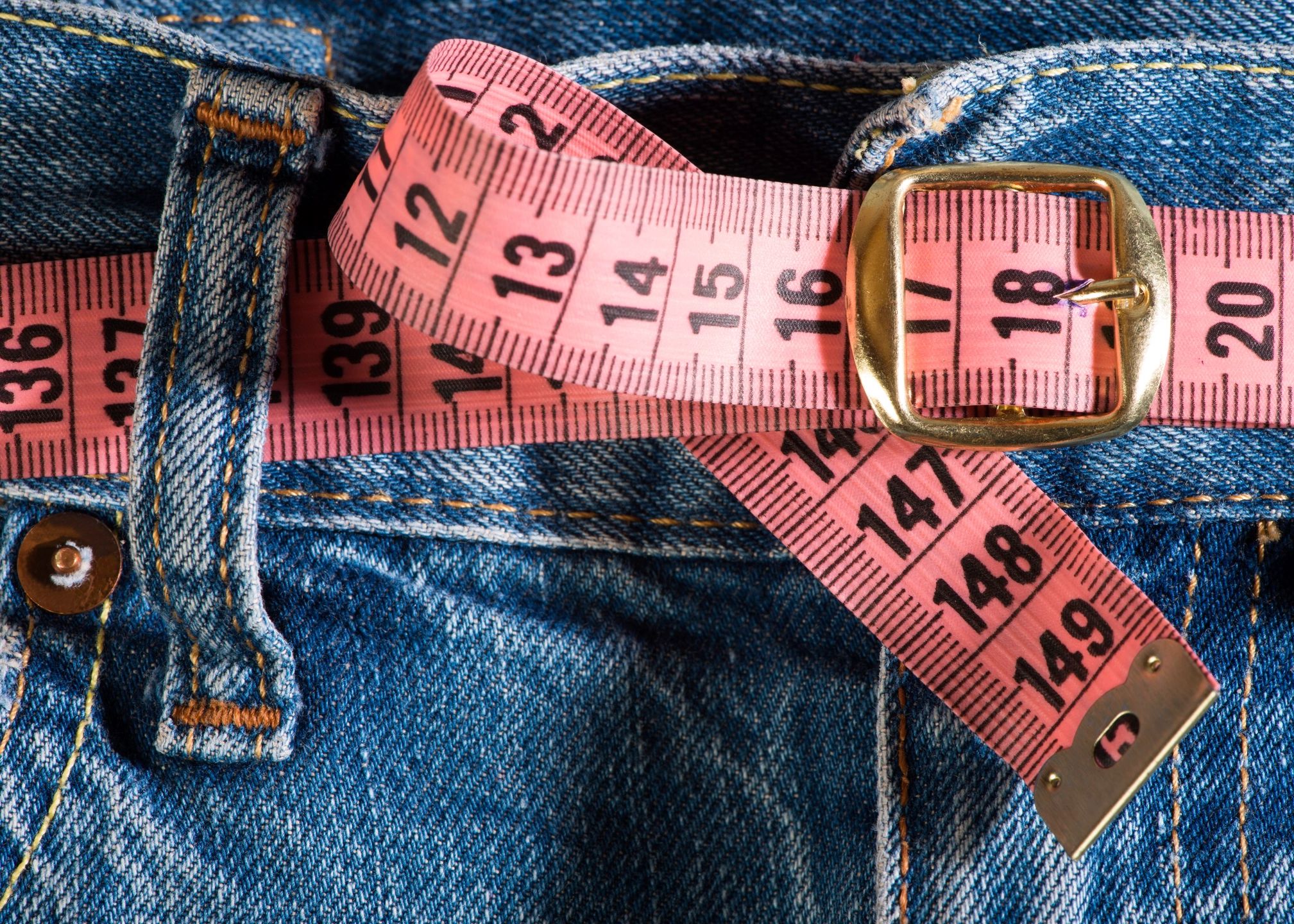 y allow for some predictive health assessments. These non-invasive methods of developing indicators through body measurement are generally referred to as anthropometric techniques (measurements and proportions of the human body).
y allow for some predictive health assessments. These non-invasive methods of developing indicators through body measurement are generally referred to as anthropometric techniques (measurements and proportions of the human body).
We provide you with the following online calculators:
- BMI
- Waist to Height Ratio
- U.S. Navy Body Fat Calculator: Men
- U.S. Navy Body Fat Calculator: Women
- Body Fat Calculator From Caliper Measurements: Men
- Body Fat Calculator From Caliper Measurements: Women
Next we'll take each measurement listed above and explore it in more detail. There are positives and negatives to everything, and taking measurements in order to try and understand the complex human body is no exception.
BMI
This measurement is a main focus of this website: the use of BMI as a prominent indicator of health, to include indicating whether one is obese or overweight, may not be the most accurate representation of an individual's state of fitness or health. This is covered in depth HERE on our site.
Waist to Height Ratio
A waist to height ratio calculation was developed as an improvement to BMI's weight and height by using a waist measurement instead of weight, which may act as an indicator measurement for levels of body fat. Unfortunately, this formula may also be lacking in accuracy as the following analysis may indicate.
Browning and Hsieh and Ashwell, (2010), wrote that “a variety of anthropometric indices have been used as a proxy for total fat or abdominal fat to assess risk for diseases, particularly CVD and diabetes.” The waist to height calculation is that the abdomen circumference should not be more than half the height for ideal % body fat composition.
I used Tableau to analyze this formula. First, a calculated field was created [ (Height*2.54)/2 ]. This formula represents the height of a person divided by 2 which should give the maximum allowable abdominal circumference as stipulated by the aforementioned technique for determining acceptable % body fat range. Height is multiplied by 2.54 because the height was measured by researchers in inches while the abdominal circumference was measured in centimeters, thus measurements are standardized. (This standardization was not necessary in previous visualizations and calculations because only relationships were analyzed, not a determination of equivalency as is done next). Highlighting a point where the formula matches with an actual abdomen circumference, the %BF is shown to be 12.00. The correlation appears to be slightly positive and weak with much scatter.
Graph #1 provides some indication that this method may not be a quality indicator of even an average level of body fat percentage. Point C provides a good reference point for the theory and subsequent empirical data. The height formula resulted in an abdominal circumference calculation of 83.50 cm (32.87 in) and the actual measured abdominal circumference of the individual shows a measurement of 83.30 (32.80 in); a match of 99.8% with an actual calculated %BF (body fat), derived from a highly accurate water dunk technique, of 12.00. Viewing the trend line and point A, the calculation vs measurement match is about 95.6%, but a %BF of 48.40, more than 4 times the value of point C! Additionally, point B is adjacent to point A, yet is more closely related to C on the graph when viewing size and color for %BF.
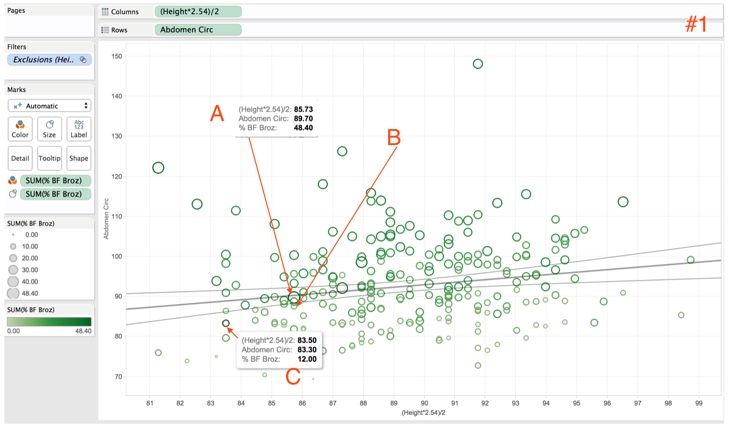
Ok, so what did all that mean? If the waist to height ratio is being used to determine body fat percentage, which in turn is the indicator to assess health risk levels for cardiovascular disease (CVD) or diabetes, Browning and Hsieh and Ashwell, (2010), other methods of determining body fat percentage may provide a more accurate number.
U.S. Navy Body Fat Calculator
The United States Navy developed two formulas based on anthropomorphic (body) measurements: one for men and one for women. These formulas use girth measurements and constants derived from analyses involving highly accurate water dunking techniques.
One measurement which may seem slightly counterintuitive at first is the neck measurement. When increasing the neck size on our BODI CALCULATORS for the Navy Body Fat formula, you might notice that fitness level indicator on the left moves from overweight to athlete. Normally we think of an increasing neck as an indicator of increasing fat levels. However, this measurement is relative to the other measurements and an increasing neck size, without an increase in waist size, tends to indicate increased muscle, therefore the explanation as to why health level might move from overweight to athletic with neck only increase. If the waist measurement is increased with the neck, this suggests overall body fat increase and the health indicator reflects that appropriately.
Body Fat Measurement: Obtained via Caliper Measurements
The only set that may require a little more work on your part would be the caliper measurements for body fat assessment. Following we will provide you with the definitions of the skin fold measurements and how to properly use the caliper to obtain them. These numbers can then be entered into the calculator using sliders on the BODI CALCULATORS page along with the other calculators to make your assessments.
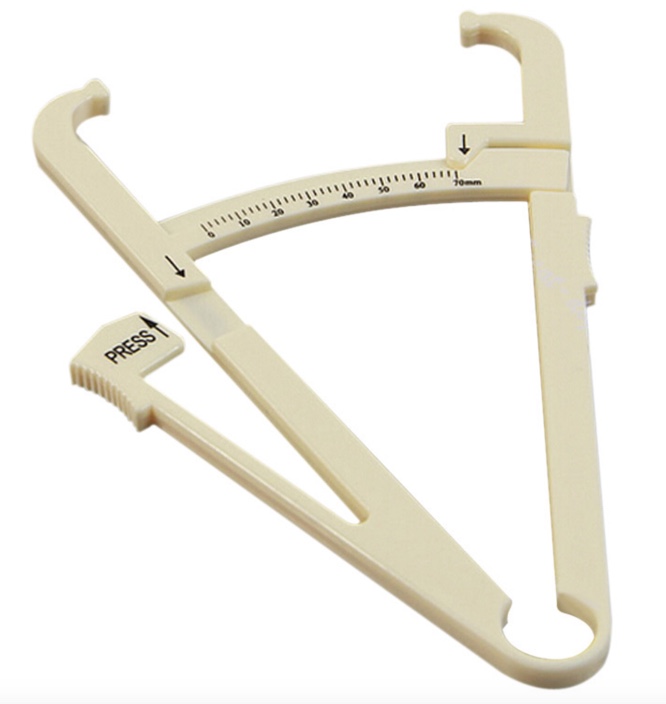
There are several styles and price points for body fat calipers on the market, but the basic style of caliper is shown on the left. While the argument for more expensive calipers is usually that they are more accurate, poor measurement technique may nullify an expensive and highly "accurate" caliper. Given that nearly any body fat caliper measurement and subsequent calculation from those measurements is an estimate, the amount you wish to spend on the equipment is left to your judgement.
When measuring, use the following technique (back measurements will naturally require an assistant):
Use your fingers to begin to pinch the skin and underlying fat as shown
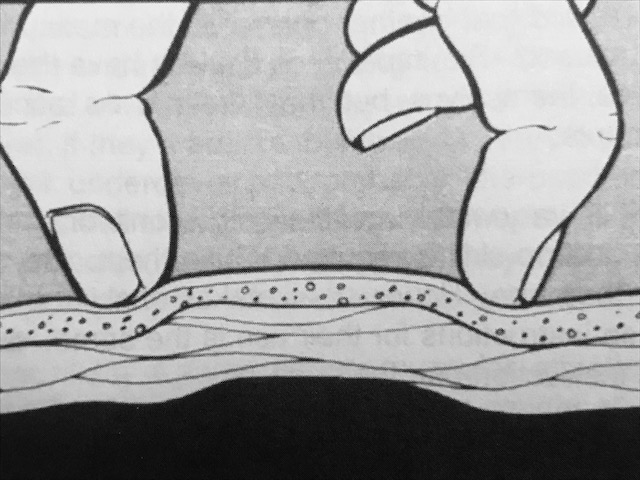
Continue to pinch until your fingers cannot come together any closer
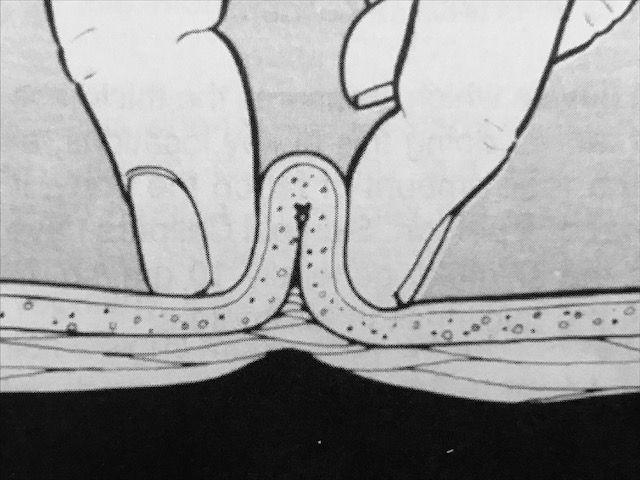
Place the calipers directly beside your fingers and on either side of the "pinch" to obtain the measurement

The following measurements (in mm) are needed for the BODI CALCULATOR caliper body fat formula on our site (match numbers to those on the Figure):
Men:
- Triceps (8)
- Midaxilla (1)
- Supraspinale (3)
Women:
- Abdominal (4)
- Midaxilla (1)
- Biceps (2)
- Medial Calf (6)
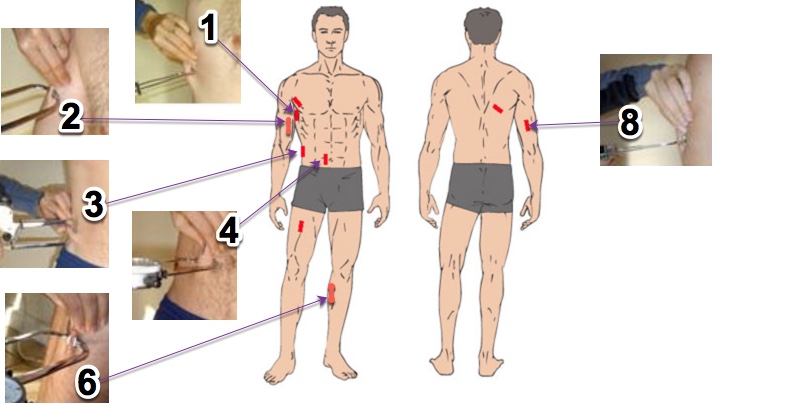
Record your measurements in millimeters (mm) and enter them in the calculator HERE